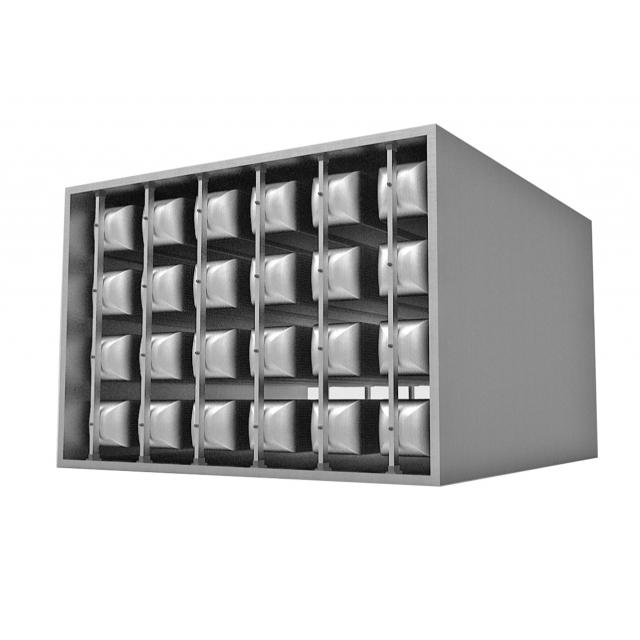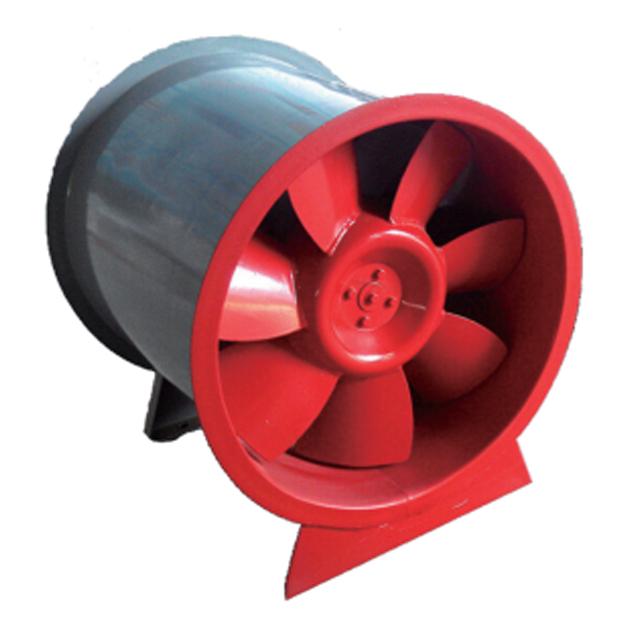Why does it have to be installed?
Why install ventilation facilities?
Definition and Analysis
Ventilation facilities refer to devices or systems used to improve indoor environment and promote air circulation. Its core function is to achieve indoor air circulation and renewal by introducing fresh air and discharging polluted air. In modern architectural design, ventilation facilities have become an indispensable part and are of great significance in improving the quality of living and working environments.
Ventilation engineering, as an important branch of the field of building and environmental engineering, is defined as a series of engineering activities that involve designing, installing, and maintaining ventilation systems to improve indoor air quality, regulate indoor temperature and humidity, thereby ensuring personnel health and improving work efficiency. In modern society, with people's increasing attention to quality of life and working environment, the importance of ventilation engineering is becoming increasingly prominent.
According to relevant statistical data, indoor air pollution has become one of the important factors affecting people's health. And ventilation engineering is the key to solving this problem. By designing a reasonable ventilation system, harmful indoor gases and odors can be effectively eliminated, fresh air can be introduced, and the indoor environment can be improved. In addition, ventilation engineering can effectively regulate indoor temperature and humidity, creating a comfortable working and living environment for people. Therefore, ventilation engineering plays an irreplaceable role in improving people's quality of life and work efficiency.
Air can serve as a transportation medium for pollution sources. These air carrying pollution sources may come from the outside or from the inside, and ventilation equipment should be installed to control air movement and prevent air pollution from occurring. According to research data, indoor air pollution levels are often higher than outdoor levels, and ventilation facilities can effectively reduce the concentration of indoor pollutants, such as harmful substances such as formaldehyde and benzene. By introducing fresh air, ventilation facilities can also increase indoor oxygen content, improve air freshness and comfort.
In addition, ventilation facilities also have the function of regulating indoor temperature and humidity. In the hot summer, ventilation facilities can take away indoor heat and moisture, reduce indoor temperature, and improve the comfort of residents. In the cold winter, ventilation facilities can ensure indoor temperature while avoiding excessively dry air, reducing static electricity and skin dryness.
The function of ventilation facilities is also reflected in their guarantee of human health. A well ventilated environment helps prevent respiratory diseases, reduce the breeding and transmission of bacteria and viruses. Meanwhile, fresh air can also improve people's psychological state, enhance work efficiency and quality of life. As the famous architect Frank Lloyd Wright once said, "Architecture is the container of life, and ventilation is the breath of life."
In summary, the definition and functional analysis of ventilation facilities reveal their importance and necessity in modern life. By improving indoor air quality, regulating temperature and humidity, and ensuring human health, ventilation facilities provide a more comfortable and healthy environment for our lives and work. Therefore, in the process of architectural design and decoration, we should attach great importance to the selection and installation of ventilation facilities to ensure their maximum effectiveness.
Scenario application
Scenario application 1: Ventilation requirements in home environments are crucial as they directly affect the quality of life and health level of residents. In modern home design, ventilation facilities have become an indispensable part. According to relevant research, a good ventilation environment can effectively reduce the concentration of indoor air pollutants and improve indoor air quality. For example, in a closed bedroom, indoor air quality will rapidly decline due to human respiration and volatile organic compounds released from furniture. After installing appropriate ventilation facilities, these pollutants can be effectively eliminated and indoor air can be kept fresh.
In addition, ventilation facilities can effectively regulate indoor temperature and humidity, creating a more comfortable living environment for residents. In the hot summer, introducing cool outdoor air through ventilation facilities can effectively reduce indoor temperature, reduce the frequency of air conditioning usage, and thus achieve the goal of energy conservation and emission reduction. Meanwhile, in humid seasons, ventilation facilities can also help eliminate indoor moisture and prevent furniture and walls from becoming moldy.
When choosing ventilation facilities, we need to consider the specific situation of the home environment. For example, for larger living rooms or bedrooms, efficient ventilation equipment such as fresh air systems or exhaust fans can be installed; For smaller kitchens or bathrooms, simple ventilation facilities such as exhaust fans or ventilation windows can be installed. At the same time, we also need to pay attention to the brand and quality of ventilation facilities, choose reputable manufacturers and high-quality products to ensure ventilation effectiveness and service life.
The configuration of ventilation facilities is crucial in office spaces. Taking a large technology company as an example, in order to improve the quality of the working environment for employees, the company pays special attention to the ventilation facilities in the office space. They adopted advanced mechanical ventilation systems combined with natural ventilation design to ensure indoor air circulation. According to data, the air quality in the company's office space is significantly better than other enterprises that have not optimized ventilation facilities, and the work efficiency of employees has also been significantly improved as a result.
The configuration of ventilation facilities is not only related to air quality, but also directly affects the health and work efficiency of employees. According to research, a good ventilation environment can reduce the incidence rate of respiratory diseases, and improve employee attendance and job satisfaction. At the same time, ventilation facilities can effectively regulate indoor temperature and humidity, creating a comfortable working environment for employees, thereby improving work efficiency.
When selecting ventilation facilities, the office should fully consider the size of the space and usage needs. For large office spaces, mechanical ventilation systems may be more suitable, while for small offices, natural ventilation can be achieved through reasonable layout and window design. In addition, brand and quality are also factors that cannot be ignored when choosing ventilation facilities. High quality ventilation facilities not only ensure good ventilation effects, but also reduce energy consumption and maintenance costs.
The impact on air quality
1 Reduce pollutant concentration and improve air quality
Ventilation facilities play a crucial role in reducing pollutant concentrations and improving air quality. According to relevant research, the concentration of indoor air pollutants is often higher than that of outdoor air, and ventilation facilities can effectively discharge indoor polluted air, introduce fresh air, and thereby reduce the concentration of pollutants. For example, in offices equipped with efficient ventilation facilities, the concentration of PM2.5 in the air can be reduced to one-third of its original level, greatly improving indoor air quality.
Ventilation facilities not only help reduce pollutant concentrations, but also improve indoor air quality, thereby ensuring people's health. A survey on the home environment shows that households with installed ventilation facilities have significantly lower levels of harmful substances such as formaldehyde and benzene in the indoor air compared to households without ventilation facilities. The long-term accumulation of these harmful substances can pose a potential threat to human health, and ventilation facilities can effectively reduce these risks.
In addition, ventilation facilities can create a more comfortable indoor environment by adjusting temperature and humidity. In humid or hot seasons, ventilation facilities can effectively expel indoor moisture, reduce humidity, and reduce the growth of mold. At the same time, it can also introduce fresh outdoor air into the indoor environment, regulate indoor temperature, and allow people to feel comfortable natural wind indoors.
2 Adjusting temperature and humidity to create a comfortable environment
Ventilation facilities play a crucial role in regulating indoor temperature and humidity. In the hot summer, effective ventilation can expel high-temperature indoor air and introduce relatively cool outdoor air, thereby reducing indoor temperature. According to research data, good ventilation facilities can reduce indoor temperature by 5-10 degrees Celsius, greatly improving the comfort of living and working. In cold winter, ventilation facilities can also play a role, reducing indoor heat loss and maintaining indoor warmth through reasonable airflow organization.
In addition to direct temperature regulation, ventilation facilities can also effectively regulate indoor humidity. In environments with high humidity, ventilation facilities can expel humid air and prevent indoor items from becoming damp and moldy. In dry environments, ventilation facilities can increase indoor humidity by introducing humid outdoor air, avoiding dry skin and respiratory discomfort. This humidity regulation function is crucial for maintaining the comfort and health of the indoor environment.
In practical applications, many public places and residential areas have adopted advanced ventilation facilities to create a comfortable indoor environment. For example, some large shopping malls and office buildings have adopted intelligent ventilation systems, which automatically adjust the ventilation volume based on changes in indoor and outdoor temperature and humidity, ensuring that the indoor environment is always in the best condition. These cases fully demonstrate the practical effectiveness of ventilation facilities in regulating temperature and humidity, and creating a comfortable environment.
In addition, ventilation facilities are also of great significance in energy conservation and emission reduction. Through reasonable ventilation design, the operating time of air conditioning and heating equipment can be reduced, thereby reducing energy consumption and carbon emissions. This not only helps to reduce energy costs, but also conforms to the current green and low-carbon environmental protection concept. Therefore, installing ventilation facilities is not only a need to improve indoor environmental comfort, but also an inevitable choice to achieve sustainable development.
The effect of ventilation facilities on human health
1 Prevent respiratory diseases and ensure respiratory health
Ventilation facilities play a crucial role in preventing respiratory diseases. According to a report from the World Health Organization, indoor air pollution is one of the main causes of respiratory diseases, and good ventilation facilities can effectively reduce the concentration of indoor air pollutants, thereby significantly reducing the occurrence of respiratory diseases. For example, a study on the ventilation status of school classrooms found that students in well ventilated classrooms were significantly less likely to suffer from respiratory diseases than in poorly ventilated classrooms. This data fully demonstrates the practical effectiveness of ventilation facilities in preventing respiratory diseases.
Ventilation facilities introduce fresh air and expel indoor polluted air, helping to maintain the freshness and circulation of indoor air. Fresh air contains sufficient oxygen and negative ions, which help improve respiratory function, enhance immunity, and effectively prevent respiratory diseases. In addition, ventilation facilities can effectively remove bacteria, viruses and other microorganisms in indoor air, reducing the risk of respiratory disease transmission. Therefore, installing ventilation facilities is one of the important measures to ensure respiratory health.
When selecting ventilation facilities, we should allocate them reasonably based on space size and usage needs. For home environments, installation of fresh air systems or air purifiers can be chosen to improve indoor air quality; For office spaces, it is possible to consider installing exhaust fans or ventilation windows to ensure indoor air circulation. At the same time, we should also pay attention to the brand and quality of ventilation facilities, choose products with good reputation and stable performance, to ensure their long-term stable operation and provide strong protection for respiratory health.
2 Improve psychological state and increase work efficiency
Ventilation facilities play an undeniable role in improving psychological state and improving work efficiency. Research has shown that good indoor air quality can significantly improve employee satisfaction and happiness, thereby improving work efficiency. For example, in a large technology company, the introduction of advanced ventilation facilities increased employee work efficiency by about 15%, while significantly improving their mental health. This is because fresh air can reduce the concentration of indoor pollutants, reduce the sense of oppression caused by employees being in a closed environment for a long time, and thus enable them to maintain a more positive attitude and higher work efficiency in their work.
In addition, ventilation facilities can also regulate indoor temperature and humidity, creating a more comfortable working environment for employees. Under suitable temperature and humidity, people's thinking becomes more agile, their attention becomes more focused, and their work efficiency naturally improves. According to relevant data, when indoor temperature and humidity are controlled within an appropriate range, employees' work efficiency and creativity can be significantly improved.
Therefore, installing ventilation facilities is not only to meet basic ventilation needs, but also to improve the psychological state and work efficiency of employees. By introducing advanced ventilation technology, we can create a healthier and more comfortable working environment for employees, allowing them to unleash greater potential in their work.








